Purdue Hemp Products Utilization Consortium
Hemp is an emerging and under-utilized crop that can be leveraged to provide a great deal of value to farmers and the agriculture and food industries. Many products are generated from hemp crops, including fiber, grain, oil, and cannabinoids (cannabidiol, CBD). Therefore, there is a need to think outside the box and develop a strategy for increased utilization to produce value-added products from hemp grain and hemp waste streams.
In 2017, the market value for hemp foods was $137 million and is expected to exceed $212 million in 2022. To maximize the potential of the industrial and food hemp crop, we must fill the gaps in knowledge regarding its composition and utilization.
The objective of the Purdue Hemp Products Utilization Consortium is to advance research and development of hemp-based products in the food science and agriculture industries. Specific goals include:
- Process scale up and agricultural experimental trials
- Fine tune and optimize the technology, including the process conditions for intended applications, and
- Development of marketing strategies to reach prospective customers and understand their needs.
Contact Us
Department of Food Science
Email: ssimsek@purdue.edu
Phone: 765-494-8256
745 Agriculture Mall Dr.
West Lafayette, IN 47097
Vision and sustainability
Our passion is addressing global needs and the challenges of growing populations and climate change through sustainable solutions! The consortium's short term aims will be to leverage funds, test pilot scale production, and evaluate pilot production conditions.
Our long term plans include:
- Scale up of production
- Partnering with companies with IP
- Customization of materials for specific applications
- Develop marketing strategies
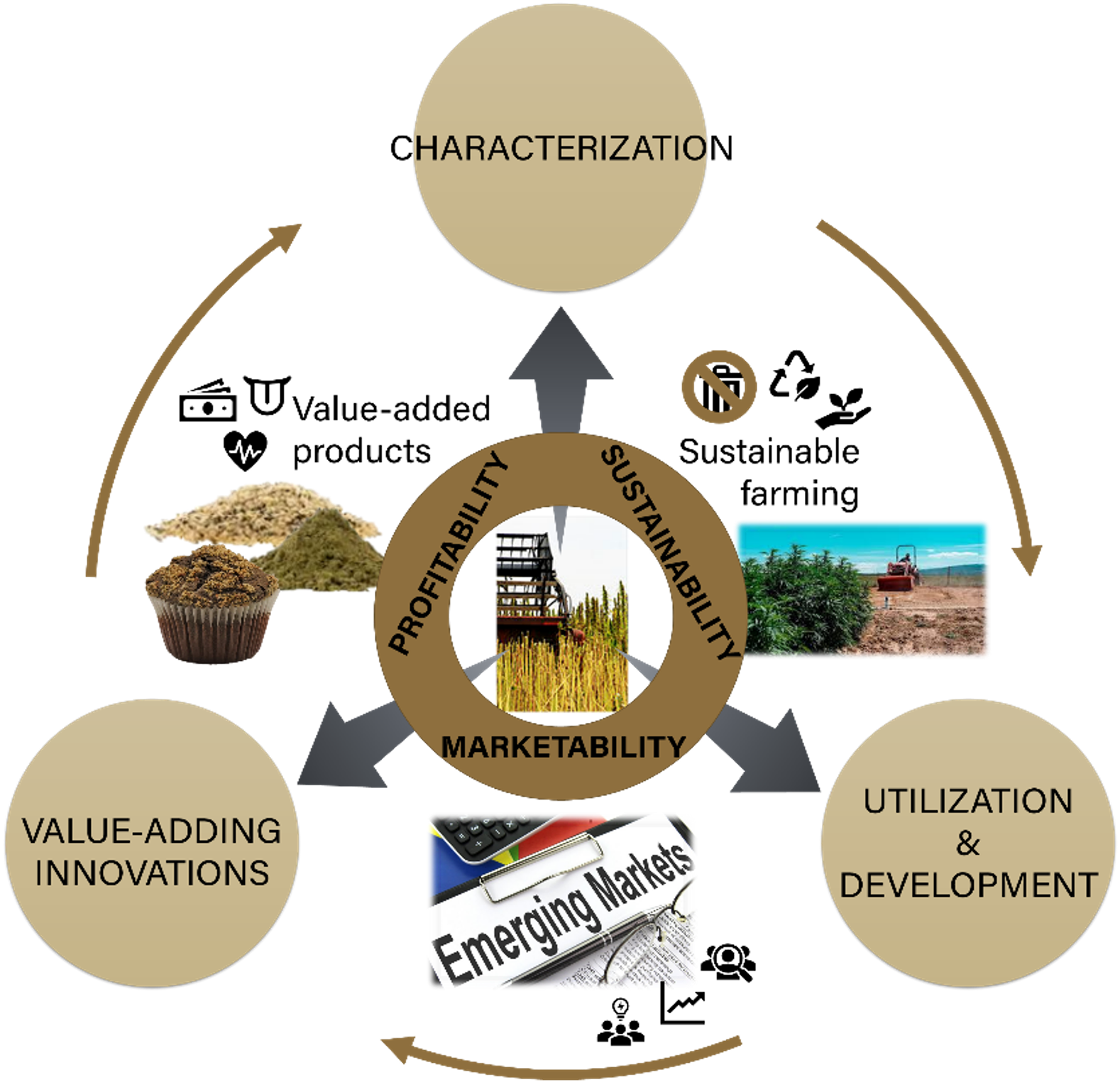
unlocking the possibilities of hemp
Industrial hemp is a multipurpose plant that can be cultivated for several purposes, including seed, fiber, cannabidiol (CBD) oil, and biomass production. Hemp is usually grown for either fiber or grain (commonly known as seed). The bast fiber obtained from hemp stalks is used to produce fabrics, papers, and other industrial products. At the same time, grain and seed meals are excellent sources of oil, protein, and dietary fiber. The hemp seed is comprised of an outer hull and inner heart (cotyledon). Hemp seed oil can be produced from whole seeds or hearts by cold press or solvent extraction. The remaining hemp cake or hemp meal can then be further processed to obtain protein and dietary fiber fractions for addition in fortified foods or in plant-based meat and dairy products.
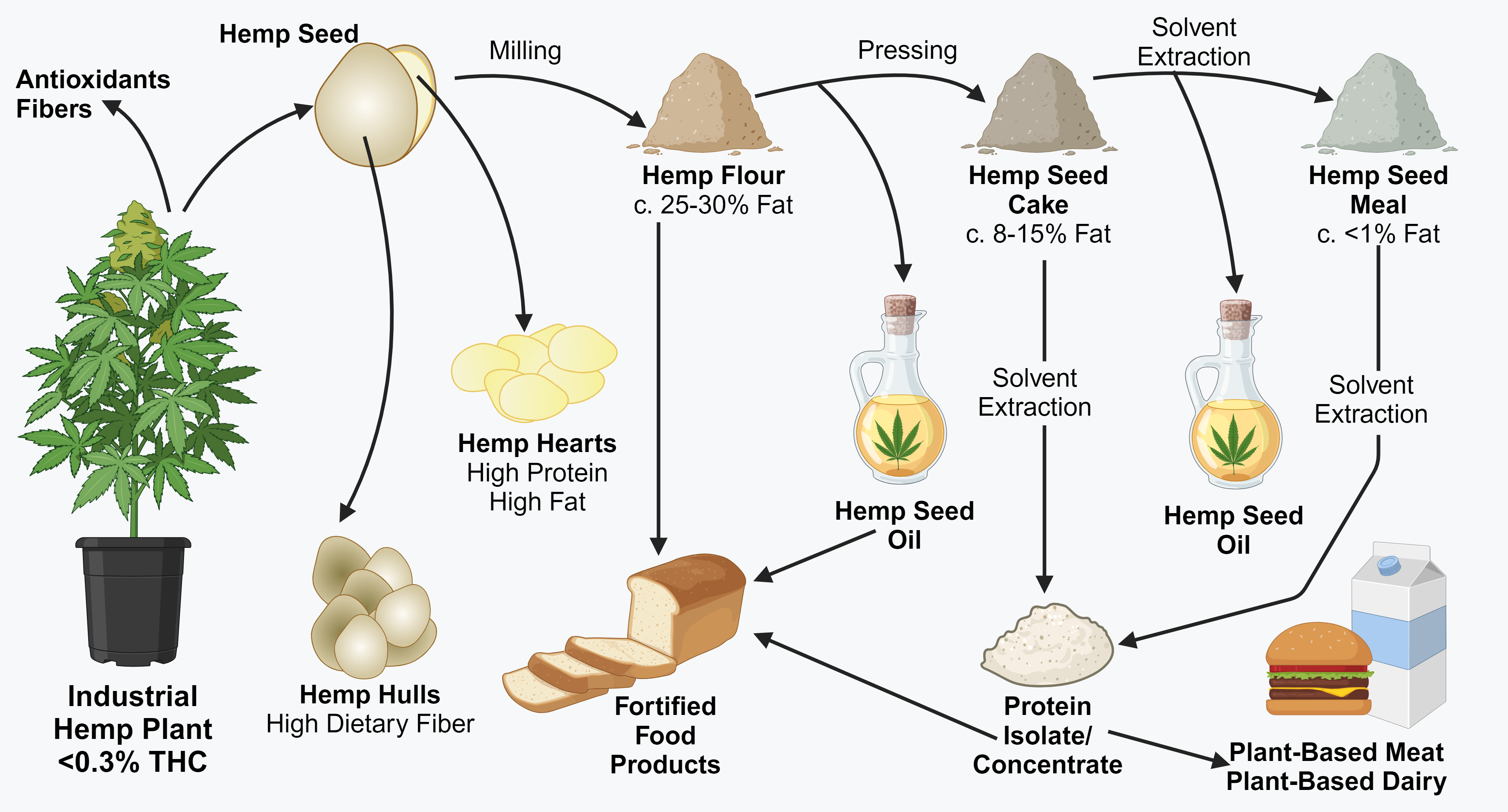
Discovering Novel Uses for Hemp
Discovering Novel Uses for Hemp
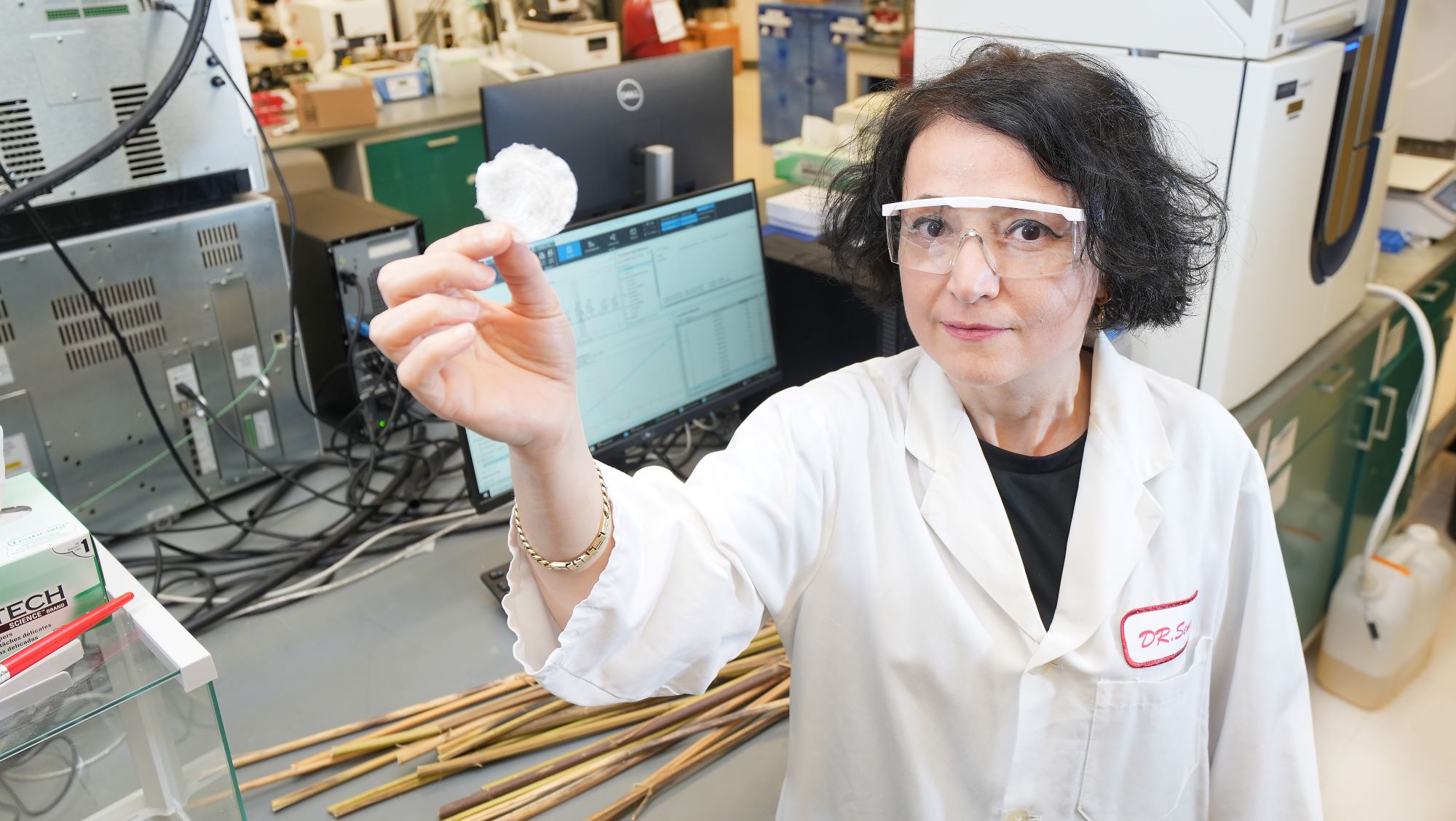
The manufacture and discard of traditional superabsorbent materials are affecting the planet. To combat this dilemma, Dr. Senay Simsek leads a team developing superabsorbent materials from cellulose extracted from hemp.
Explore the Researchhemp products in the food industry
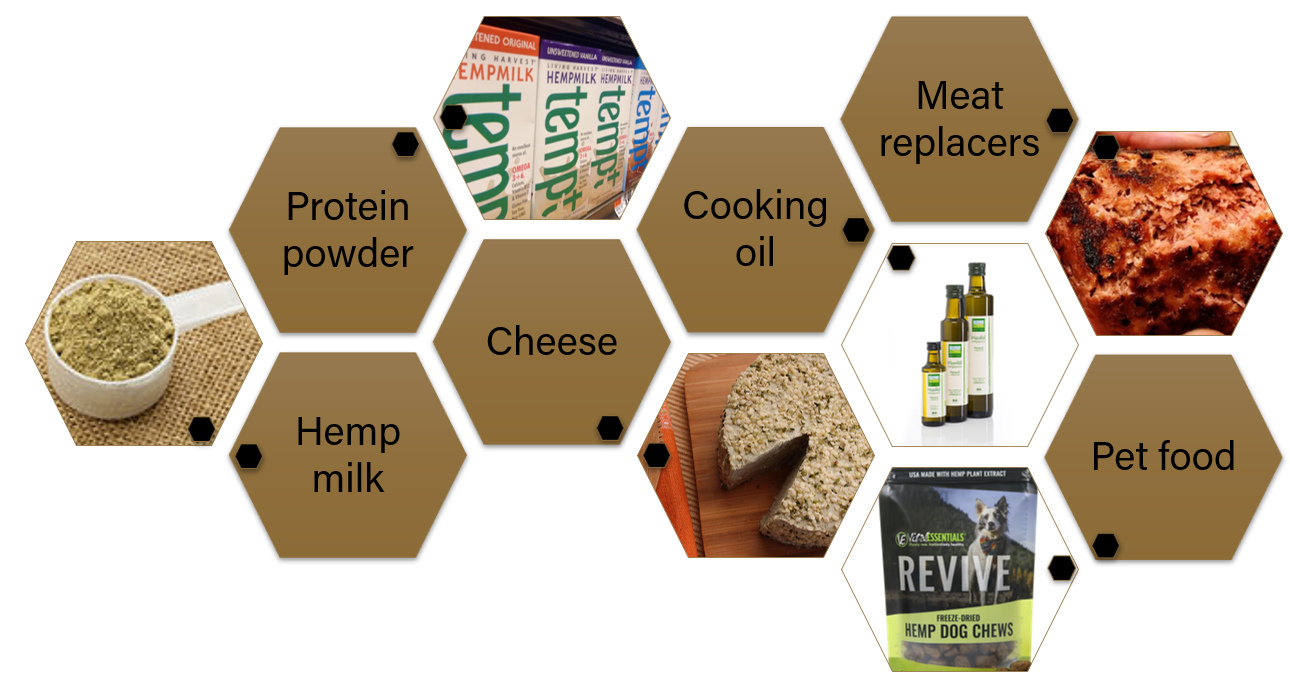
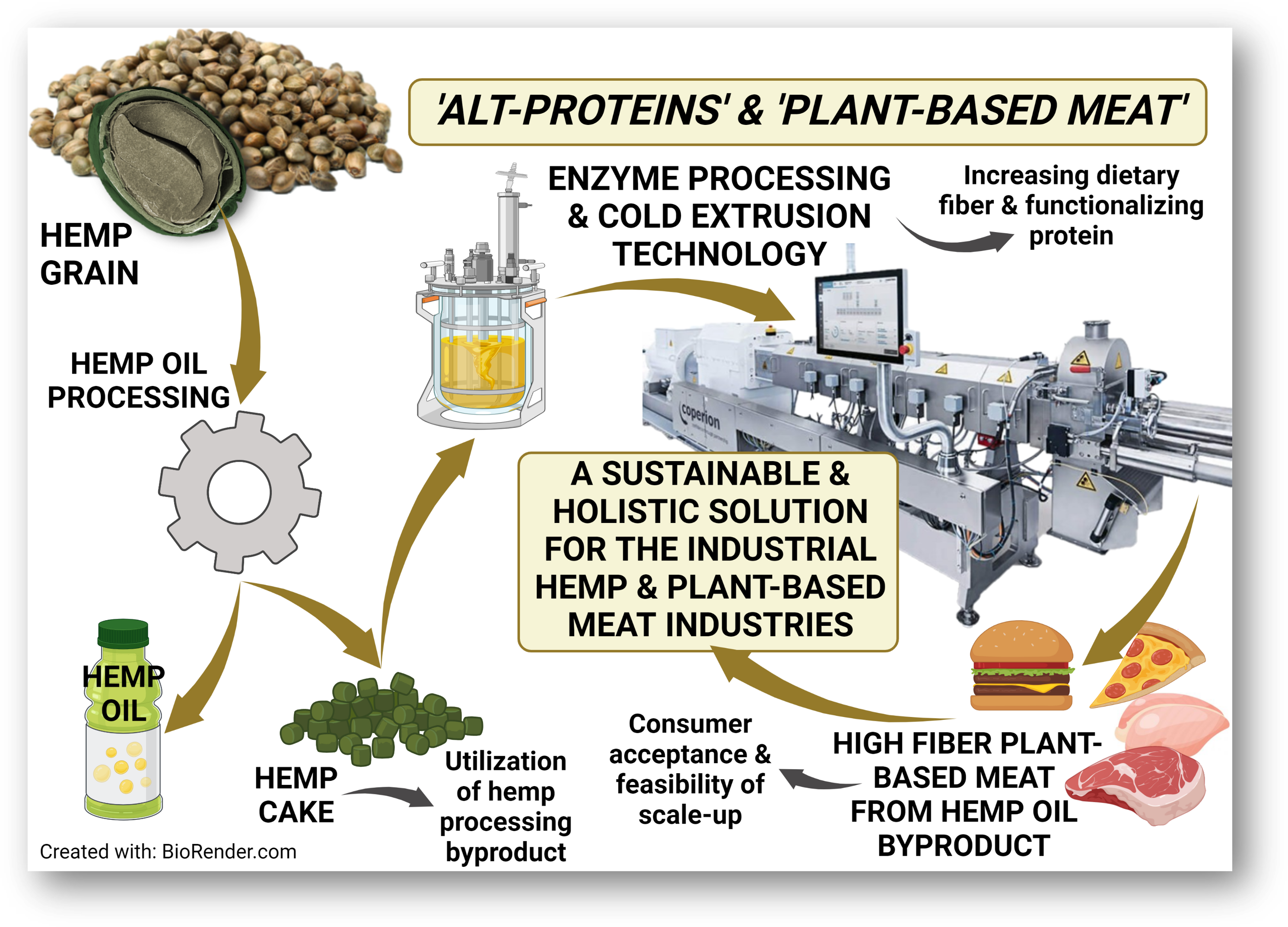
hemp grain
The hemp seed can be utilized as a whole seed or fractionated into the oil and meal or cake components. The hemp grain is comprised of a hull surrounding the heart or cotyledon. The hull contains most of the dietary fiber while the protein and oil is concentrated in the heart.
Evaluation of hemp grain quality and composition gives viable information for hemp growers. The Purdue Hemp Project grows hemp in Indiana to provide research-based information for growers. Cultivars are chosen because of their availability and commonality.
When looking at the morphological structure of the grain we found that there were differences among varieties for hull adhesion and compactness of the heart. These differences may impact processing such as hull removal or extraction of oil, proteins and carbohydrates.
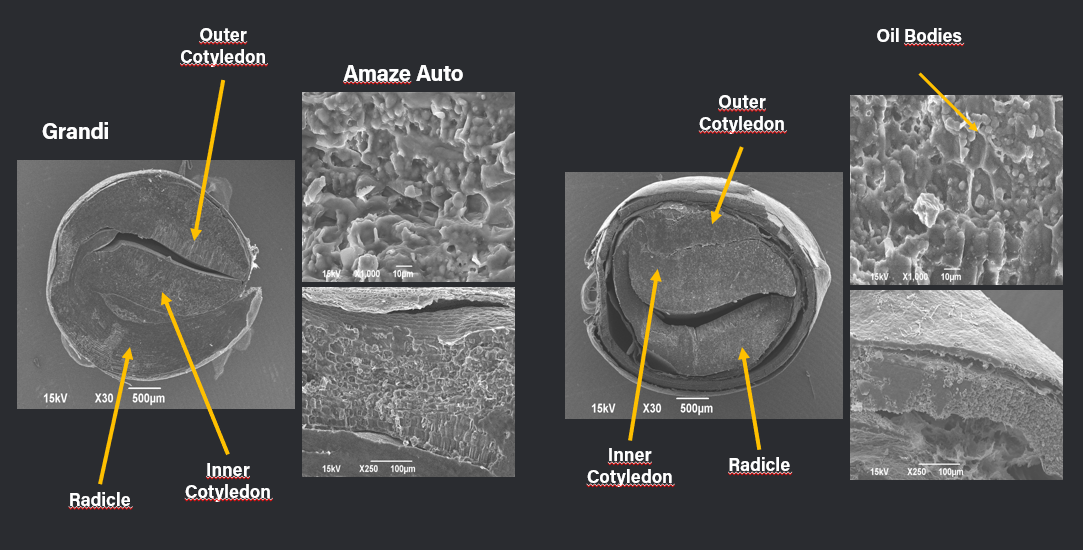
Interested in joining the consortium?
If your company is interested in joining the Purdue Hemp Product Utilization Consortium, please email Senay Simsek at ssimsek@purdue.edu.
Contact Senay